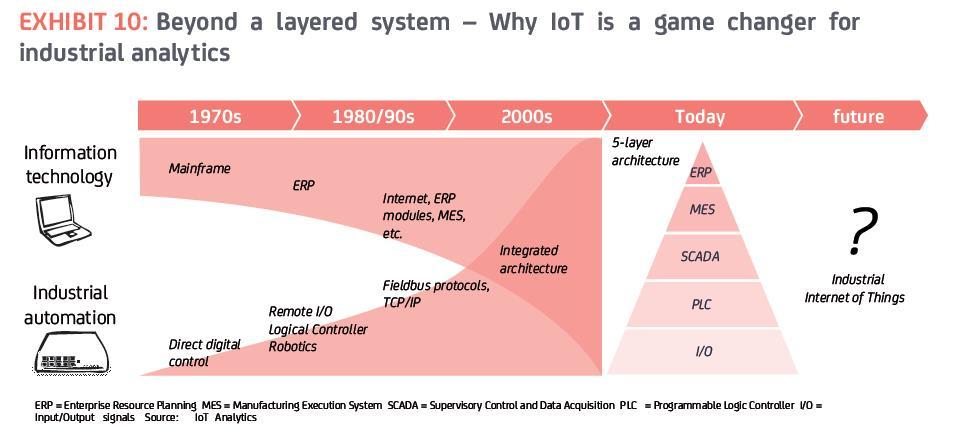 Enabling real-time integration across on-premise and cloud platforms often involves integrating SAP, Salesforce, third-party and legacy systems. 2017 will be a break-out year for real-time integration between SAP, Salesforce, and third party systems in support of Internet of Things and Industrial Analytics.
Enabling real-time integration across on-premise and cloud platforms often involves integrating SAP, Salesforce, third-party and legacy systems. 2017 will be a break-out year for real-time integration between SAP, Salesforce, and third party systems in support of Internet of Things and Industrial Analytics.- McKinsey Global Institute predicts that the Internet of Things (IoT) will generate up to $11T in value to the global economy by 2025.
- Predictive and prescriptive maintenance of machines (79%), customer/marketing related analytics (77%) and analysis of product usage in the field (76%) are the top three applications of Industrial Analytics in the next 1 to 3 years.
Real-Time Integration Is the Cornerstone Of Industrial Analytics
Industrial Analytics (IA) describes the collection, analysis and usage of data generated in industrial operations and throughout the entire product lifecycle, applicable to any company that is manufacturing and selling physical products. It involves traditional methods of data capture and statistical modeling. Enabling legacy, third-party and Salesforce, SAP integration is one of the most foundational technologies that Industrial Analytics relies on today and will in the future. Real-time integration is essential for enabling connectivity between Internet of Things (IoT) devices, in addition to enabling improved methods for analyzing and interpreting data. One of the most innovative companies in this area is enosiX, a leading global provider of Salesforce and SAP integration applications and solutions. They’re an interesting startup to watch and have successfully deployed their integration solutions at Bunn, Techtronic Industries, YETI Coolers and other leading companies globally.
A study has recently been published that highlights just how foundational integration will be to Industrial Analytics and IoT. You can download the Industrial Analytics Report 2016/17 report here (58 pp., PDF, free, opt-in). This study was initiated and governed by the Digital Analytics Association e.V. Germany (DAAG), which runs a professional working group on the topic of Industrial Analytics. Research firm IoT Analytics GmbH was selected to conduct the study. Interviews with 151 analytics professionals and decision-makers in industrial companies were completed as part of the study. Hewlett-Packard Enterprise, data science service companies Comma Soft and Kiana Systems sponsored the research. All research and analysis related steps required for the study including interviewing respondents, data gathering, data analysis and interpretation, were conducted by IoT Analytics GmbH. Please see page 52 of the study for the methodology.
Key Takeaways:
- With real-time integration, organizations will be able to Increase revenue (33.1%), increase customer satisfaction (22.1%) and increase product quality (11%) using Industrial Analytics. The majority of industrial organizations see Industrial Analytics as a catalyst for future revenue growth, not primarily as a means of cost reduction. Upgrading existing products, changing the business model of existing products, and creating new business models are three typical approaches companies are taking to generate revenue from Industrial Analytics. Integration is the fuel that will drive Industrial Analytics in 2017 and beyond.
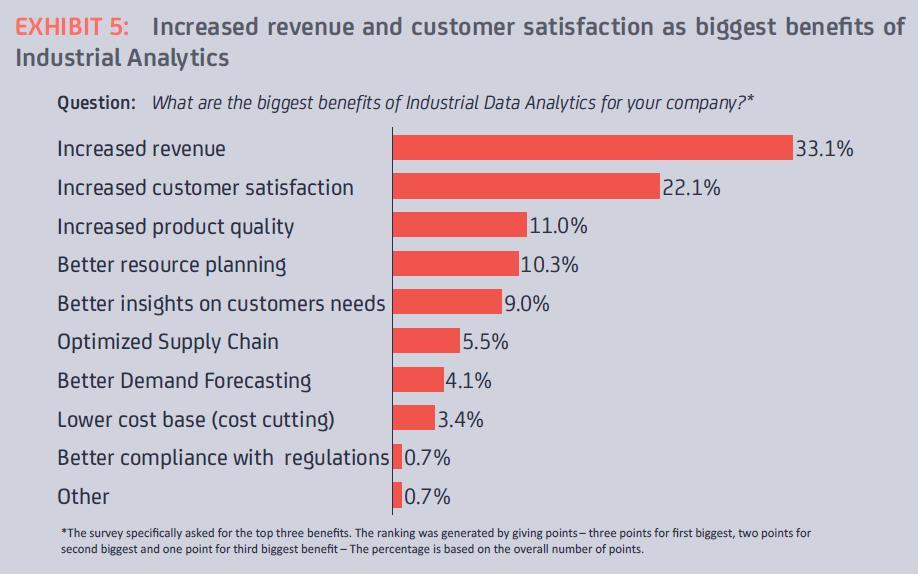
- For many manufacturers, the more pervasive their real-time SAP integration is, the more effective their IoT and Industrial Analytics strategies will be. Manufacturers adopting this approach to integration and enabling Industrial Analytics through their operations will be able to attain predictive and prescriptive maintenance of their product machines (79%). This area of preventative maintenance is the most important application of Industrial Analytics in the next 1 – 3 years. Customer/marketing-related analytics (77%) and analysis of product usage in the field (76%) are the second- and third-most important. The following graphic provides an overview of the 13 most important applications of Industrial Analytics.
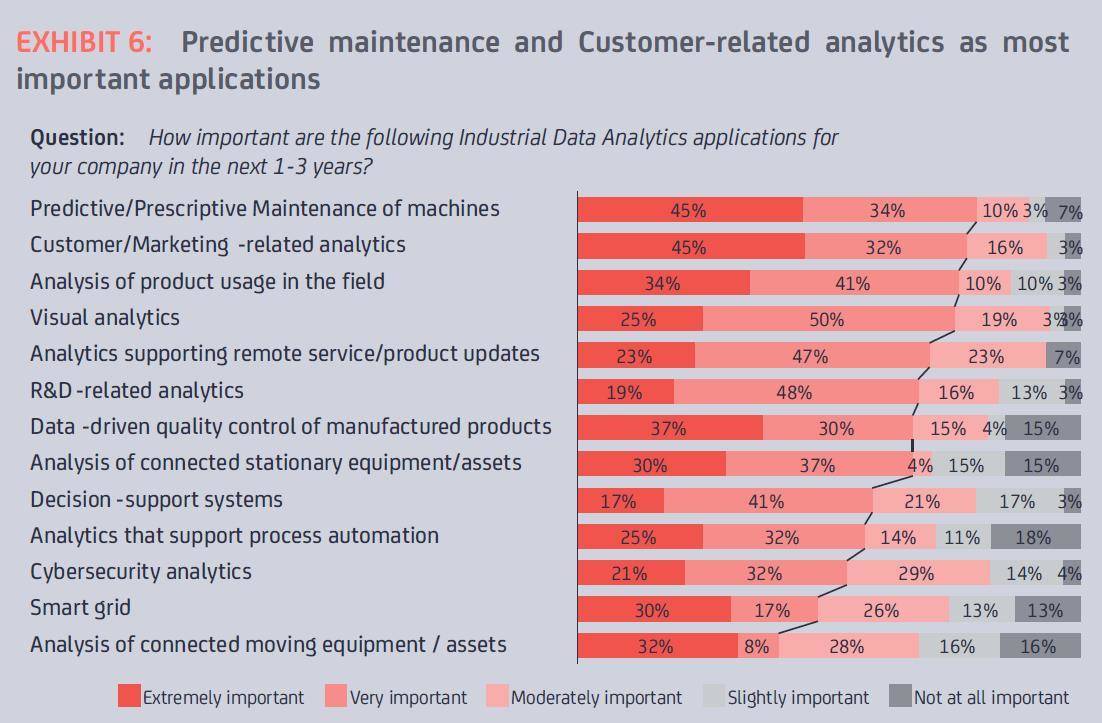
Recommended for You
Webcast, January 12th: Leveraging Urgency and Scarcity for Increased Sales
- 68% of decision-makers have a company-wide data analytics strategy, 46% have a dedicated organizational unit and only 30% have completed actual projects, further underscoring the enabling role of integration in their analytics and IoT strategies. The study found that out of the remaining 70% of industrial organizations, the majority of firms have ongoing projects in the prototyping phase.
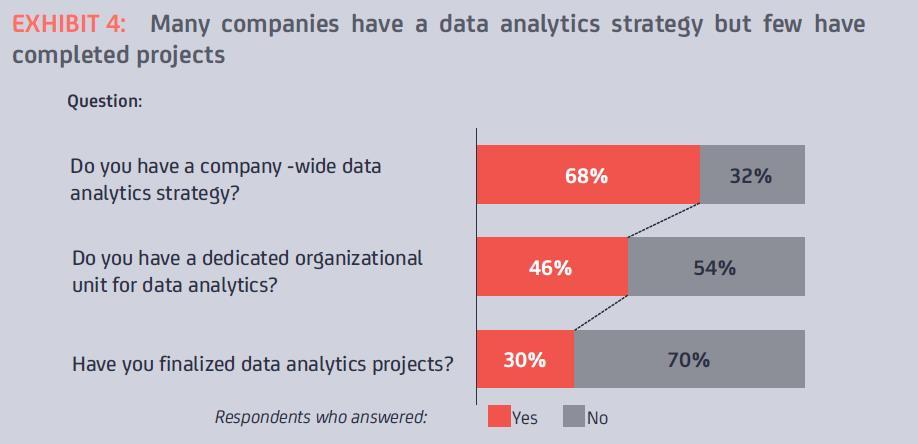
- Business Intelligence (BI) tools, Predictive Analytics tools and Advanced Analytics Platforms will be pivotal to enabling industrial data analysis in the next five years. Business Intelligence Tools such as SAP Business Objects will increase in importance to industrial manufacturing leaders from 39% to 77% in the next five years. Predictive Analytics tools such as HPE Haven Predictive Analytics will increase from 32% to 69%. The role of spreadsheets used for industrial data analytics is expected to decline (i.e., 27% think it is important in 5 years vs. 54% today).

- The Industrial Analytics technology stack is designed to scale based on the integration of legacy systems, industrial automation apps and systems, MES and SCADA systems integration combined with sensor-based data. IoT Analytics GmbH defines the technology stack based on four components inclouding data sources, necessary infrastructure, analytics tools, and applications. The following graphic illustrates the technology stack and underscores how essential integration is to the vision of Industrial Analytics being realized.
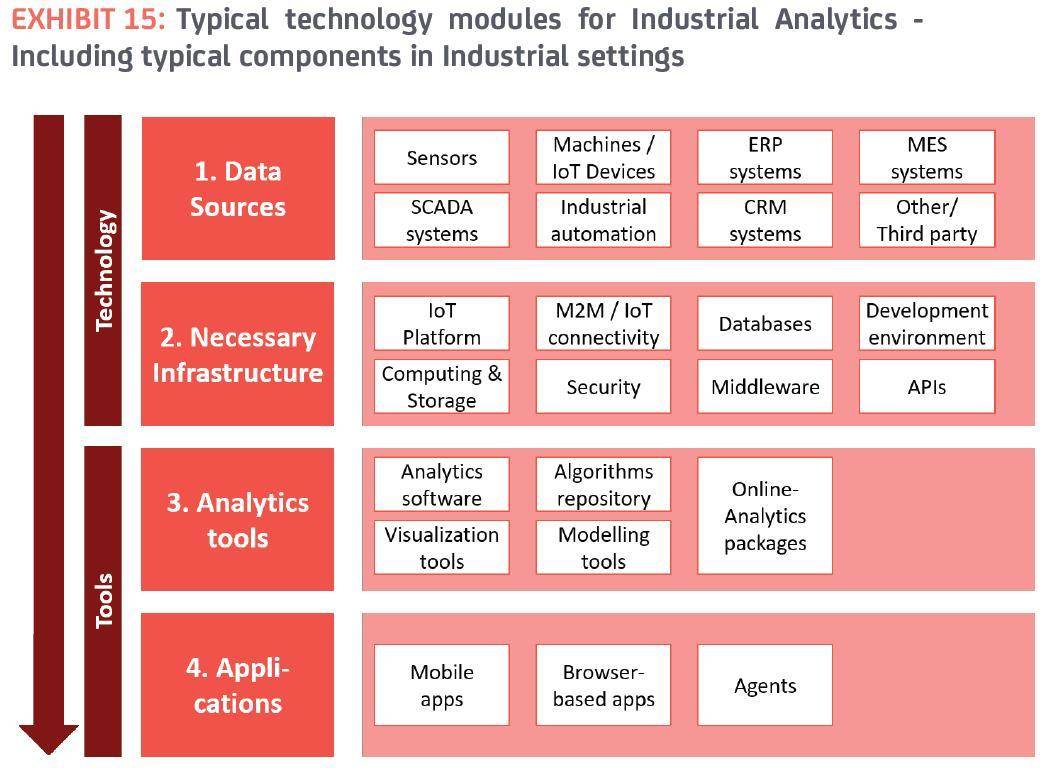
- Industrial Internet of Things (IIoT) and Industry 4.0 will rely on real-time integration to enable an era of shop-floor smart sensors that can make autonomous decisions and trade-offs regarding manufacturing execution. IoT Analytics GmbH predicts this will lead to smart processes and smart products that communicate within production environments and learn from their decisions, improving performance over time. The study suggests that Manufacturing Execution System (MES) agents will be vertically integrated into higher level enterprise planning and product change management processes so that these organizations can synchronously orchestrate the flow of data, rather than go through each layer individually.
